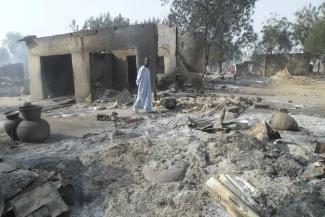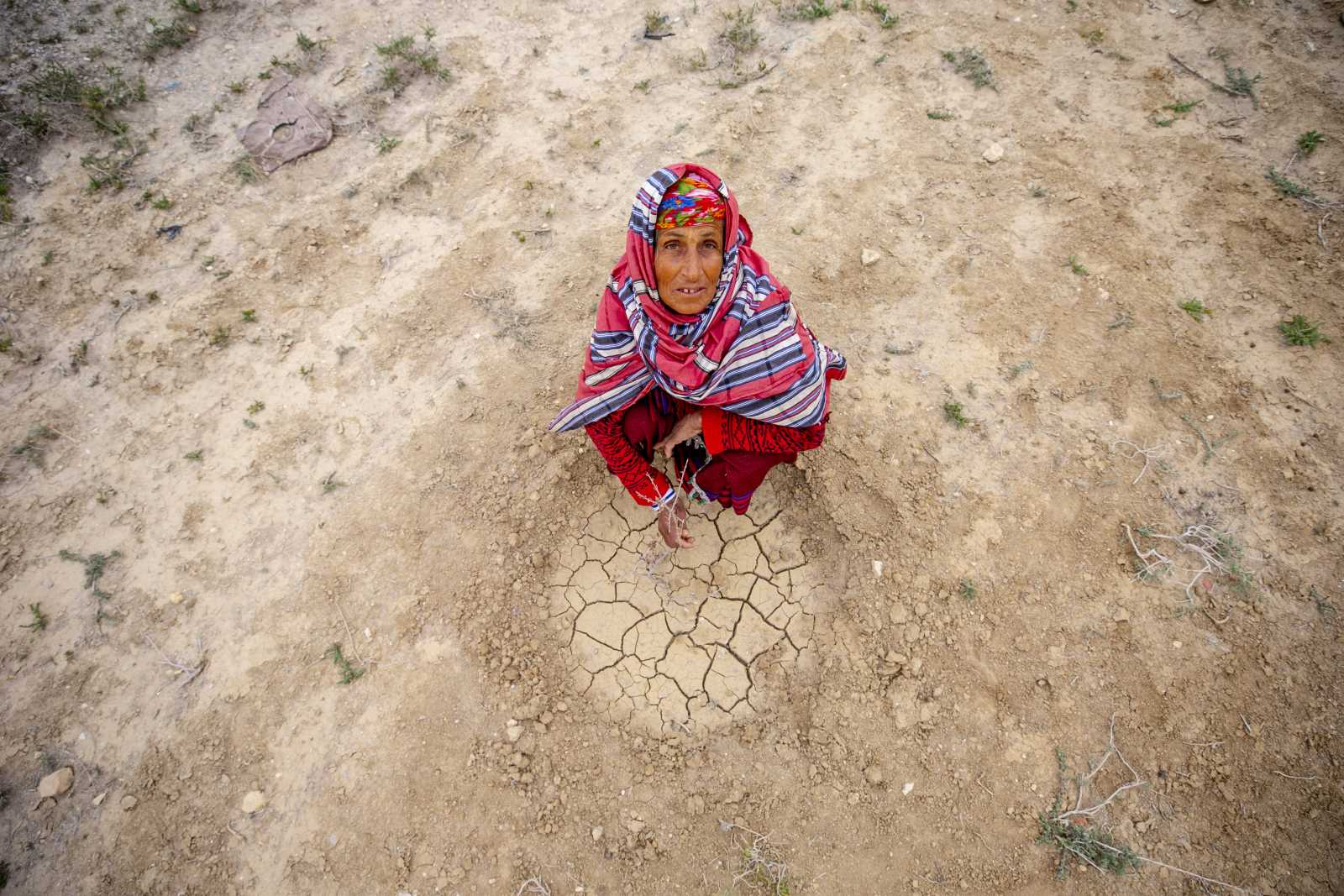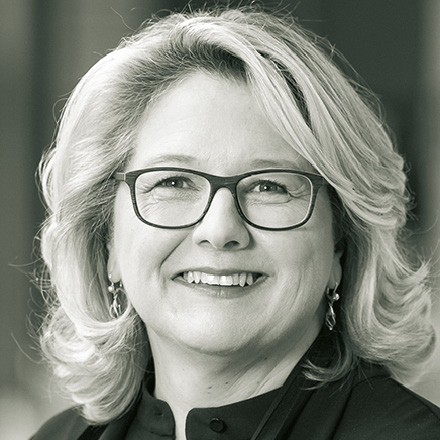Lake Chad region
Nexus makes sense

The protracted crisis in the Lake Chad Basin is one of the world’s worst humanitarian crises. Statehood is chronically fragile in this region: poverty, underdevelopment, unemployment and a lack of opportunities for young people keep fuelling extremism. The situation is exacerbated by environmental degradation and the effects of climate change. The development crisis of the impoverished region has resulted in armed conflict, which has plagued the people of the four countries concerned for the past ten years (see Lea Diehl in the Monitor section, D+C/E+Z e-Paper 2018/09).
In recent years, the crisis has spread from north-eastern Nigeria to the neighbouring countries of Cameroon, Niger and Chad, with devastating effects for more than 17 million people. Eleven million people, more than half of them children, depend on humanitarian assistance. More than 2.4 million people have been forcibly displaced; they now live as internally displaced persons (IDPs) or as refugees, either in camps or in host communities across the region.
In this context, the traditional LRRD approach (Linking Relief, Rehabilitation and Development) is not suitable. It assumes that short, medium and long-term operations will be coordinated in the event of a disaster and that humanitarian assistance first serves rehabilitation and then further developmental measures. This assumption has proven untenable in complex crises and conflicts. Therefore, the Nexus approach makes much more sense in the Lake Chad Basin (see Sid Johann Peruvemba in Focus section, D+C/E+Z e-Paper 2018/06).
Meeting needs simultaneously
People in conflict regions have a variety of concurrent needs: They require humanitarian assistance, development assistance and peace promotion at the same time. In this sense, it is important to define what peace promotion means and what civil-society organisations can contribute.
Currently, social tensions are rising at the local level in the Lake Chad Basin region. Such strains appear in various contexts, including:
- tensions between internally displaced persons, refugees and host communities regarding access to livelihoods and basic social infrastructure (schools, health centres et cetera),
- tensions between farmers and herders, compounded by restrictions on movement caused by the conflict, and
- stigmatisation and marginalisation of victims of gender-based violence and of people seen as supporters (whether voluntarily or involuntarily) of non-state armed groups.
The integrated Nexus approach aims to relieve those strains through coordinated action. The idea is that organisations involved in humanitarian assistance, development cooperation and peacebuilding assume responsibility together. The approach recognises the importance of meeting immediate humanitarian needs while also addressing the region’s development deficits, which have caused the crisis and keep driving it.
It is very important to use an area-based approach because the nature and severity of the different types of needs – i.e., humanitarian, development and peacebuilding – vary across the region. Even communities that are only a few kilometres apart and which belong to the same administrative region, may have quite different needs.
Accordingly, intervention must be tailored to the local situation. A major success factor in this regard is starting with a joint context analysis, both across organisational boundaries and across the different types of assistance (humanitarian, development and peace-promotion). This analysis should lead to joint planning that takes into account the strengths of the various stakeholders.
At this stage, humanitarian organisations tend to point out that the humanitarian crisis must be relieved as a matter of priority – and certainly this is the case. Yet the experience of the Lake Chad Basin shows that the work of humanitarian groups is not constrained by joint analysis and planning. The truth is that these groups often struggle to do their work in conflict areas. In the northeast, humanitarian organisations currently lack access to around 800,000 people.
Joint analysis and planning
Throughout the Lake Chad Basin, humanitarian assistance is not delivered in a vacuum. Typically, that is done where development work and peacebuilding are going on as well. To support the people affected, joint analysis and planning is essential – at the community level and beyond. Especially for organisations with a dual mandate, Nexus offers a great opportunity.
The international community is adopting this logic. Initially, both the Nigerian government and the international community ignored the crisis in north-eastern Nigeria. Only from 2016 on was there a significant increase in humanitarian efforts, and in the following year a famine was averted with joint action. The Humanitarian Conference on Nigeria and the Lake Chad Region (Oslo I), which took place in Norway in February 2017, had a predominantly humanitarian focus. Discussions were essentially limited to protection, education, food security and nutrition. Afterwards, however, the focus of debate widened.
Following the Oslo I Conference, regional cooperation was reinforced to address underlying causes of the crisis. The goal was to stabilise the region and prevent the crisis from spreading further. The efforts culminated in August 2018 in the Regional Strategy for the Stabilisation, Reconstruction and Resilience of Boko Haram-affected Areas in the Lake Chad Region. It was adopted by the African Union, the Lake Chad Basin Commission and the national governments concerned.
The second conference on the Lake Chad region, also called “Oslo II”, took place in Berlin in September 2018. Participants included the governments concerned, the international community, donors and civil-society organisations. They discussed humanitarian assistance, crisis prevention, stabilisation and sustainable development together. This approach allowed the crisis to be addressed in a more comprehensive and coordinated way from that point on.
The new Regional Refugee Plan 2019/2020 for Nigeria focuses on the countries hosting refugees from Nigeria in the Lake Chad Basin (Cameroon, Niger and Chad), and was drawn up for the first time on a two-year basis under the shared responsibility of the UN Refugee Agency (UNHCR) and the UN Development Programme (UNDP). The aim is to create lasting solutions for both refugees and host communities. This approach makes sense in a setting where the local population in the host communities lives below the poverty line, where there is great gender inequality and inadequate access to basic social infrastructure.
Fabian Böckler is an expert for disaster risk management with Plan International an independent development, and humanitarian organisation that advances children’s rights and equality for girls.
fabian.boeckler@plan-international.org















